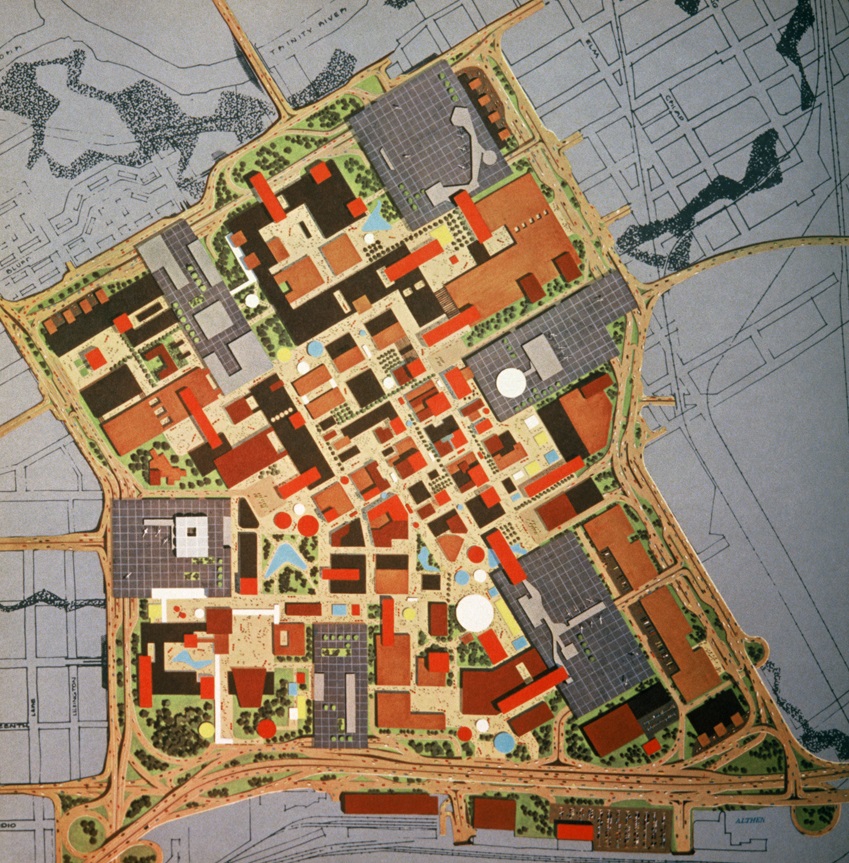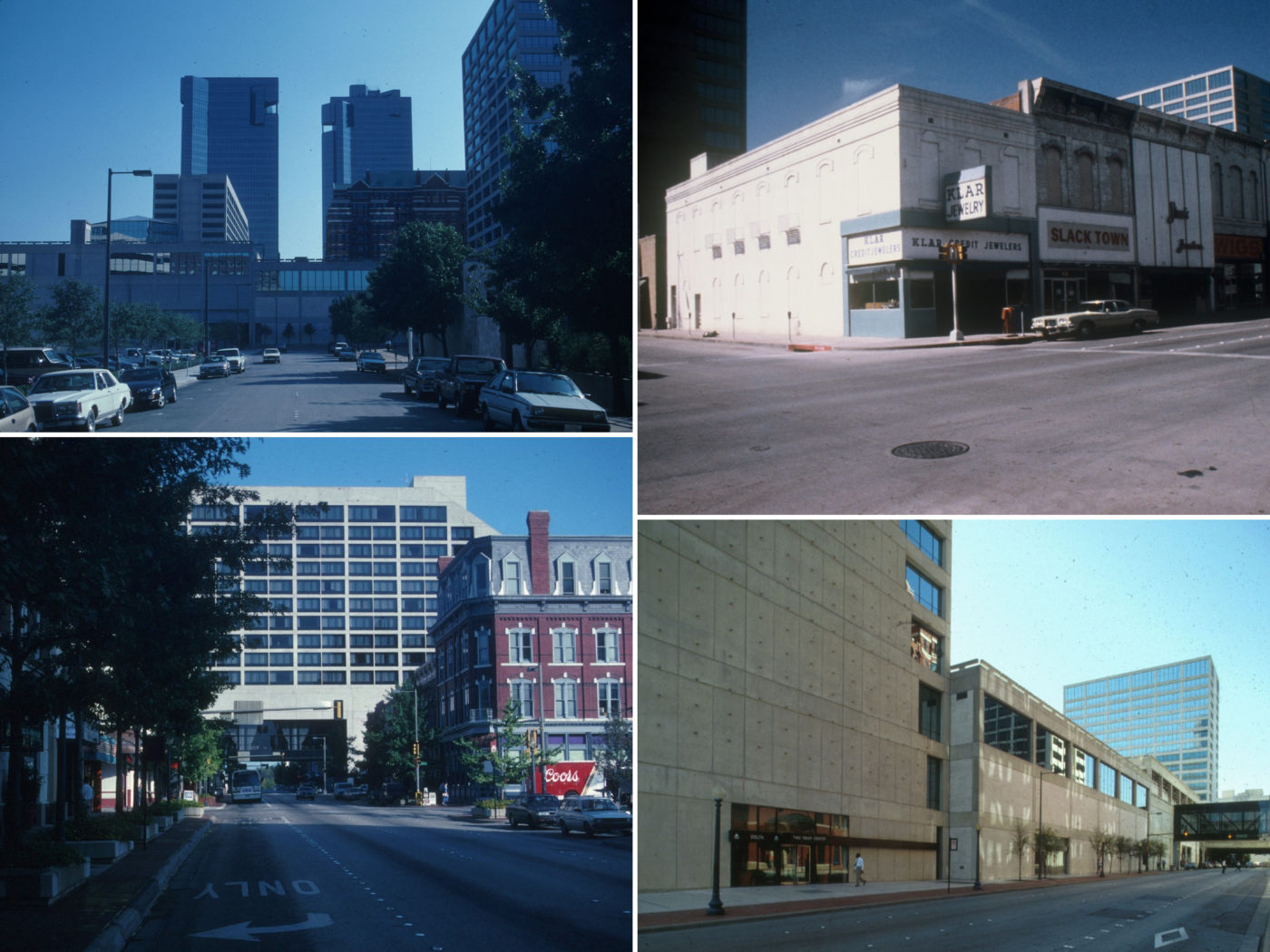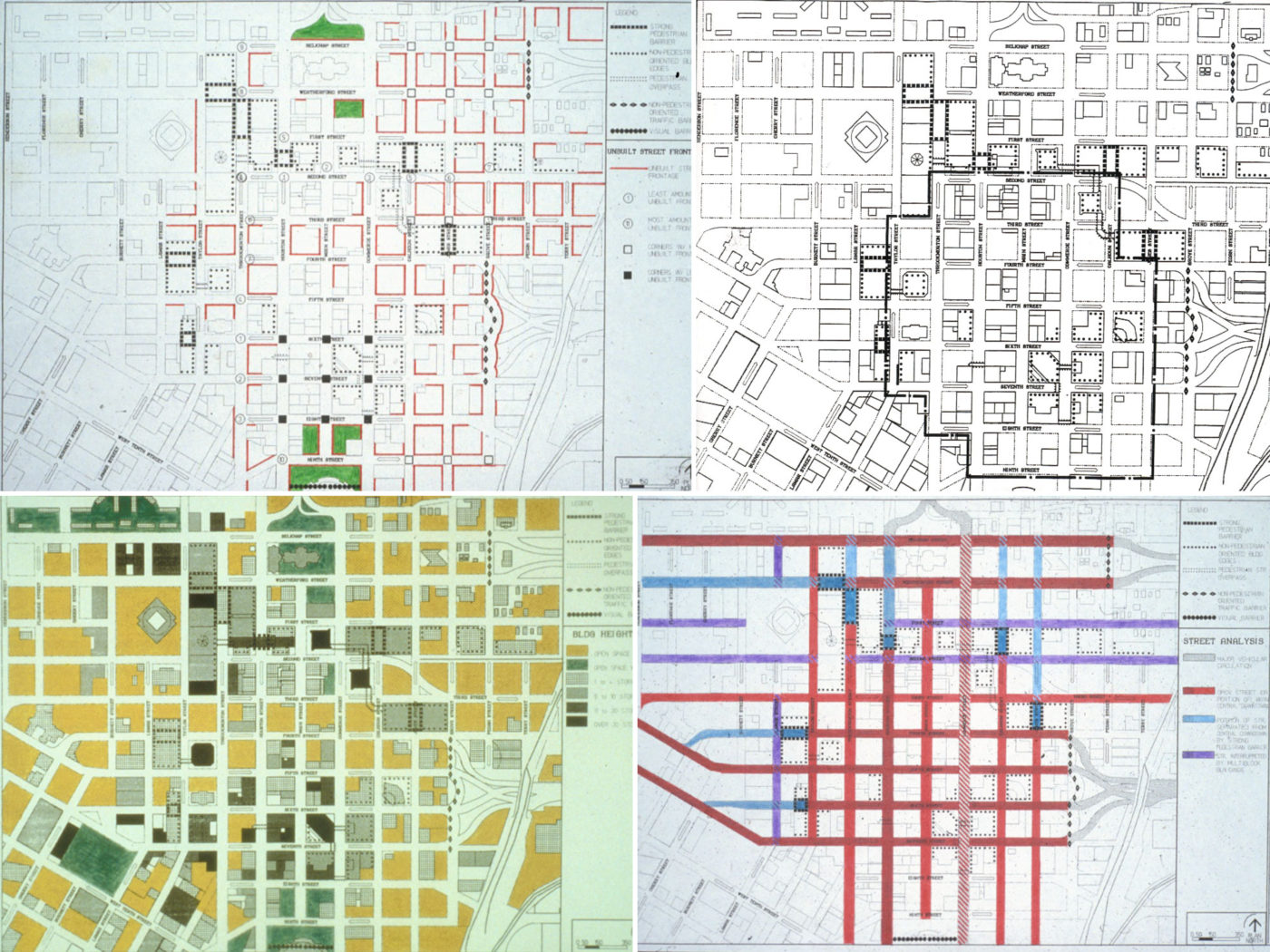Downtown Fort Worth Projects
Summary
In 1988, we began working with local property owners on the Fort Worth Master Plan, focusing on the downtown core. The study encompassed more than 150 city blocks, but focused primarily on the 36-block historic district at the center of downtown – Sundance Square. The long-term goal of the master plan was to revitalize downtown, bringing around the clock residential, commercial, entertainment and culture back to the heart of the city.

Fort Worth, TX ca 1920
Cowtown Booms and Busts
Fort Worth began like many frontier towns, originally a military outpost, the city later became a major stop along the Chilsom Cattle Train, earning it the moniker of ‘Cowtown’ along the way. The discovery of oil just 90 miles west in 1917 brought about the city’s second boom. Oil companies, supporting banks and businesses setup shop downtown, transforming the city into a busting 20th-century metropolis. Fort Worth was however not immune to the flight to the suburbs that characterized the year immediately after World War II. This exodus from downtown brought about decades of urban blight and high vacancies.

The Gruen Plan
"Urban Renewal" and the Gruen Plan
To address downtown Fort Worth’s ever worsening decline, city official retained many of the brightest planning minds of the time. These 1960s-savants made numerous recommendations, the most outrageous of which was proposed by Victor Gruen, the father of the American indoor shopping mall.
Gruen’s plan ringed downtown with a series of massive parking garages fed directly by freeways. Cars and trucks would be banned from the streets and downtown would become a pedestrian paradise – or so it was envisioned. Fortunately, Gruen’s plan proved too expensive and wasn’t implemented.
Nonetheless, ‘urban renewal’ continued in the city as numerous blocks were levels for redevelopment – much of which never happened. Entire city blocks were paved over and converted to parking lots. A handful of glass high-rise office buildings were erected, as was an indoor shopping mall that occupied three full city-blocks and literally severed a portion of downtown from itself. To serve all these new developments, along came some rather sizable, multi-block parking garages that spanned over streets and were connected to all this new real estate with sky-bridges.

Downtown Fort Worth in the late 70s, early 80s
Texans Don’t Walk
In 1985, David Schwarz was meeting with client at their downtown Fort Worth office. When heading to lunch, the client asked David was heading to the street and not the parking garage. David told him that he would be walking to lunch – just a couple of blocks away. The client replied to David that if he was going to do work in Texas, the first thing he needed to learn was that “Texans don’t walk” – they drive.
That exchange stuck with David and he soon came to realize that the reason Texans don’t walk (to get to places that is) is that planners and architects hadn’t given them any places worth walking. This realization became a key underpinning to the downtown Fort Worth Master Plan study we were hired to complete by a group of local property owners in 1988.

Give Them a Place Worth Walking
Downtown Fort Worth lacked continuity, activity and, most of all, walkability. The existing street grid was interrupted by multi-block parking decks; surface parking lots and indoor shopping malls created unfriendly street edges for pedestrians. There was an overall lack of public-oriented uses along the streets. After a thorough study of property ownerships, existing uses, open space, historic districts, and pedestrian and vehicular movements, we established a master planning program that focused on knitting back together the disparate areas of downtown by proposing a series of new development projects that would both energize downtown as well as mend the broken pedestrian environment. The master plan also identified new sites that needed to be acquired in order to complete the plan.
Following the completion of the Fort Worth Master Plan in 1989, we began 25+ years of new development and infill projects that have contributed to the downtown core’s rejuvenation and resurgence as a 24-hour-a-day place.
See the top of the page for a full list of projects.
